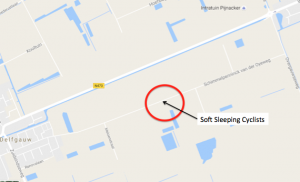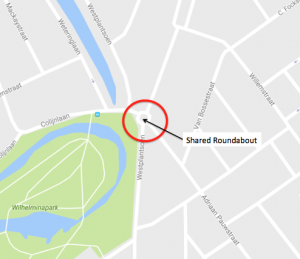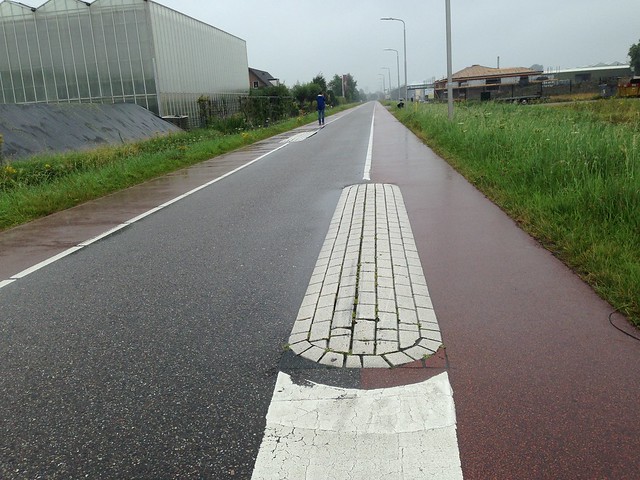2016 Systematic Safety Assignment 1
Jorden van Emmerik and Lynda Nitka
Separate Fast / Slow (Advisory Bike Lanes) – Hard and Soft “Sleeping Cyclists”
Oostsingel and Schimmelpenninck van der Oyeweg
Description of “Sleeping Cyclists”:
“Sleeping Cyclists” are traffic control devices that are primarily used on long, straight, two-directional roadways that contain advisory bike lanes and low traffic. The intent of the “Sleeping Cyclists” is to reinforce motor vehicles driving along these roadways to stay toward the center vehicle lane, and not drift into the bicycle lanes, by forcing the vehicles into a pinch point.
“Sleeping Cyclists” got their name because in England, the British call speed humps “Sleeping Policemen”, since they act as a police officer slowing down traffic without actually having a police officer present.
There are two types of “Sleeping Cyclists”: soft/mountable and hard/unmountable. A soft “Sleeping Cyclist” generally has a lower elevation (about 2 inches high) and is mountable for both vehicles and bicycles (see Figures 1 and 2 below).
Figure 1: Soft, Mountable “Sleeping Cyclist”

Figure 2: Location of Soft “Sleeping Cyclists” – Schimmelpenninck van der Oyeweg
The other type of “Sleeping Cyclist” is the hard, unmountable type. This type of “Sleeping Cyclist” is more reinforcing than the soft, mountable type because its elevation is higher (around 4 inches), and vehicles and bicycles are not able to ride over these “Sleeping Cyclists” (see Figures 3 and 4 below).
Figure 3: Hard, Unmountable “Sleeping Cyclist”

Figure 4: Location of Soft “Sleeping Cyclists” – Oostsingel
Sustainable Safety Features
Homogeneity and/or speed and direction
The “Sleeping Cyclists” reinforce homogeneity, since it reminds motor vehiclists to stay in their respective vehicle lane and to leave the bicycle lanes open for bicyclists. This way, they keep the heavier, fast-moving vehicles separate from the lighter, slow-moving bicyclists.
Predictability of road course and road user behavior by a recognizable road design
“Sleeping Cyclists” produce predictability of the roadway users’ behaviors on the roadway, since because of the fact that the “Sleeping Cyclists” are installed, bicyclists will predict that vehicles will drive in the center of the roadway and the vehiclists will predict that the bicyclists will remain on the edges of the roadway.
Forgivingness of the environment and of road users
“Sleeping Cyclists” provide forgivingness to the roadway users, since the roadways where these are used are generally long, straight roads with little traffic. Therefore, there will be points on the roadway where either the driver or cyclist will potentially swerve in and out of their respective lanes. However, the “Sleeping Cyclists” are there to remind the users to use their own lanes for traveling.



